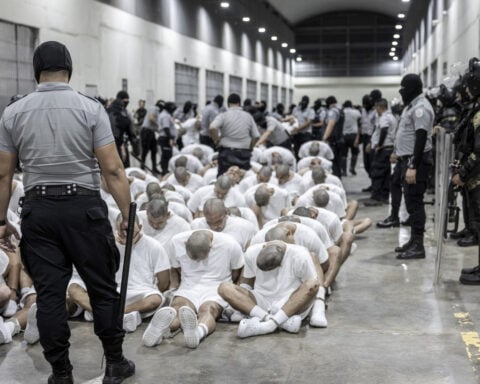Immigrants have come to shape the demographic and cultural landscape of the United States. But a lot of them migrated into the country without proper documentation. With Trump making the immigration laws stricter, and deporting thousands of migrants, it has become a thing of urgency for migrants to become legal citizens now.
As of 2017, approximately 13.6% of the U.S. population were foreign-born. This marks an increase from 4.7% in 1970 but remains below the 1890 peak of 14.8% According to a recent report by The Wall Street Journal, immigrants tend to settle in states with established immigrant communities and economic opportunities. The top five destination states are Florida, Texas, California, New York, and New Jersey.
As the new Trump administration makes the immigration policies tighter, there are a few ways in which U.S. immigrants can become legal citizens.
Spouses, unmarried children under 21, and parents of U.S. citizens who entered the country lawfully but overstayed their visas are eligible to apply for a green card without having to leave the country. They can become permanent residents through this procedure, called adjustment of status.
However, undocumented people who are married to citizens or lawful permanent residents of the U.S. and who entered the country without a visa may encounter obstacles. These problems can be lessened with a provisional unlawful presence waiver, which enables applicants to leave the country for consular processing elsewhere and return lawfully.
If a person is the beneficiary of specific petitions or labor certifications submitted on or before April 30, 2001, they may still be able to change their status even if they entered the country illegally or without inspection. This clause necessitates paying a penalty fee and fulfilling certain requirements.
Spouses, parents, and children of U.S. military personnel who are undocumented may be eligible for parole in place. This gives people work authorization and temporary legal status, which could eventually lead to a green card.
Within a year after coming to the U.S., people who fear persecution in their home countries because of their race, religion, nationality, political beliefs, or membership in a specific social group can petition for asylum. After a year, if approved, they can apply for a green card.
A U visa may be available to victims of specific crimes who have experienced physical or psychological abuse and are prepared to help law enforcement with the investigation or prosecution. After three years, there is the option to apply for permanent residency, which grants legal status and work authorisation.
Individuals who have continuously resided in the U.S. since before Jan. 1, 1972, may apply for a green card through registry, provided they meet other eligibility requirements. If they fulfill additional eligibility requirements, anyone who has lived in the U.S.continuously since before Jan. 1, 1972, may apply for a green card through the registry.
Another remedy accessible during removal procedures is Non-LPR Cancellation of Removal. Individuals must exhibit excellent moral character, have been physically present in the U.S. for at least ten years, and demonstrate that their deportation would cause exceptional and extremely unusual hardship to a spouse, parent, child, or lawful permanent resident who is a U.S. citizen.
In order to evaluate their unique circumstances and choose the best course of action for obtaining legal status, undocumented individuals should speak with certified immigration lawyers or representatives.

 Trump has begun another trade war. Here's a timeline of how we got here
Trump has begun another trade war. Here's a timeline of how we got here
 Canada's leader laments lost friendship with US in town that sheltered stranded Americans after 9/11
Canada's leader laments lost friendship with US in town that sheltered stranded Americans after 9/11
 Chinese EV giant BYD's fourth-quarter profit leaps 73%
Chinese EV giant BYD's fourth-quarter profit leaps 73%
 You're an American in another land? Prepare to talk about the why and how of Trump 2.0
You're an American in another land? Prepare to talk about the why and how of Trump 2.0
 Chalk talk: Star power, top teams and No. 5 seeds headline the women's March Madness Sweet 16
Chalk talk: Star power, top teams and No. 5 seeds headline the women's March Madness Sweet 16
 Purdue returns to Sweet 16 with 76-62 win over McNeese in March Madness
Purdue returns to Sweet 16 with 76-62 win over McNeese in March Madness








